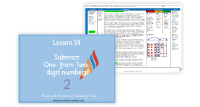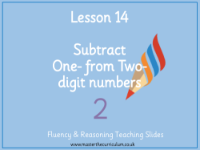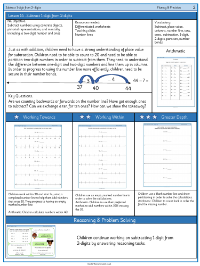Addition and subtraction - Subtract one from two-digit numbers - Planning

Maths Resource Description
In an engaging Year 2 Autumn lesson on subtraction, children learn to subtract one-digit numbers from two-digit numbers, with a particular focus on crossing the ten boundary. This skill is crucial as it requires a solid understanding of place value and the ability to partition numbers. Key resources such as ten frames, number lines, base 10 blocks, and place value grids are used to support learning, along with worksheets and a presentation. Vocabulary such as 'subtraction', 'take away', 'equals', and 'exchange' are introduced to help children articulate their mathematical processes. The lesson begins with a review of previous learning, ensuring that children are comfortable with counting to 20 and can differentiate between one-digit and two-digit numbers.
The lesson is structured around three distinct methods to practice subtraction. The first method encourages children to count back across tens using number lines. The second method involves using ten frames to partition numbers and apply the 'making 10' strategy to simplify subtraction. For example, when subtracting 7 from 22, children learn to partition 7 into 2 and 5, then subtract in steps: 22 take away 2 is 20, and 20 take away 5 is 15, reinforcing their understanding of number bonds within 10. The third method introduces a more formal approach with place value columns, where children play an 'exchange game' using base 10 blocks to subtract and, if necessary, exchange tens for ones. The lesson concludes with independent work on differentiated worksheets and a reflective 'Give me five' activity where children assess what they've learned, the skills they used and found tricky, and what they'll remember from the lesson. The lesson caters to various levels of ability, from working towards the expected level to achieving greater depth.



